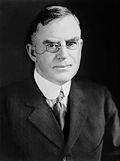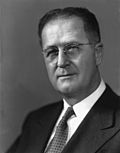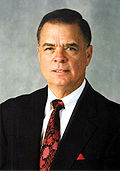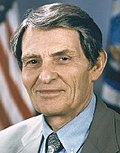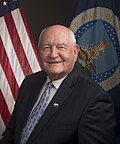| United States Secretary of Agriculture | |
|---|---|
 Seal of the Department of Agriculture | |
 Flag of the secretary | |
| United States Department of Agriculture | |
| Style | Ms. Secretary (informal) The Honorable (formal) |
| Member of | United States Cabinet |
| Reports to | President of the United States |
| Seat | Jamie L. Whitten Building, Washington, D.C. |
| Appointer | The president with Senate advice and consent |
| Term length | No fixed term |
| Constituting instrument | 7 U.S.C. § 2202 |
| Formation | February 15, 1889 |
| First holder | Norman Jay Coleman |
| Succession | Ninth [1] |
| Deputy | United States Deputy Secretary of Agriculture |
| Salary | Executive Schedule, level I |
| Website | usda.gov |
The United States secretary of agriculture is the head of the United States Department of Agriculture. The position carries similar responsibilities to those of agriculture ministers in other governments.
Contents
The department includes several organizations. The 297,000 mi2 (770,000 km2) of national forests and grasslands are managed by the United States Forest Service. [2] The safety of food produced and sold in the United States is ensured by the United States Food Safety and Inspection Service. [3] The Food Stamp Program works with the states to provide food to low-income people. [4]
Secretary of Agriculture is a Level I position in the Executive Schedule, [5] thus earning a salary of US$221,400, as of January 2021. [6]
Since February 13, 2025, the current secretary is Brooke Rollins.












